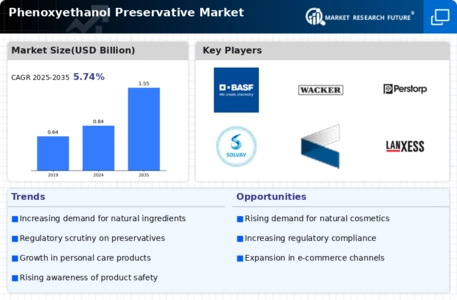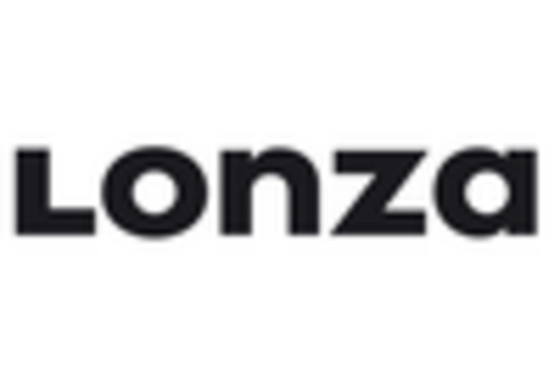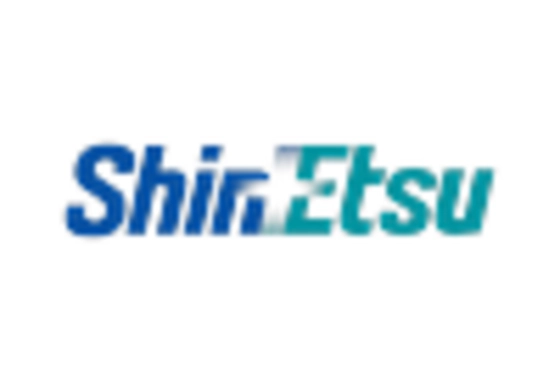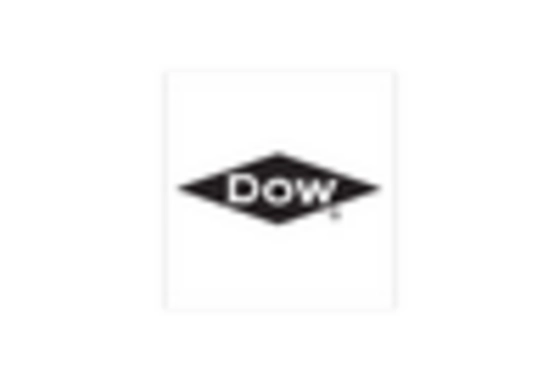Regulatory Compliance and Standards
The Phenoxyethanol Preservative Market is significantly influenced by the evolving landscape of regulatory compliance and standards. Governments and regulatory bodies are increasingly scrutinizing cosmetic and personal care products, necessitating adherence to stringent safety regulations. Phenoxyethanol is often included in formulations due to its compliance with various international safety standards, making it a preferred choice among manufacturers. The market data suggests that regions with rigorous regulatory frameworks are witnessing a surge in the adoption of Phenoxyethanol as a preservative. This compliance not only ensures product safety but also enhances consumer trust, thereby driving the growth of the Phenoxyethanol Preservative Market. As regulations continue to evolve, manufacturers are likely to invest in Phenoxyethanol to meet these standards and maintain market competitiveness.
Technological Innovations in Formulation
The Phenoxyethanol Preservative Market is significantly impacted by technological innovations in formulation techniques. Advances in formulation science enable manufacturers to enhance the stability and efficacy of products containing Phenoxyethanol. These innovations facilitate the development of formulations that not only preserve product integrity but also improve sensory attributes, such as texture and fragrance. Market data suggests that the integration of advanced technologies in product development is leading to an increased acceptance of Phenoxyethanol as a preservative. As manufacturers leverage these innovations to create superior products, the Phenoxyethanol Preservative Market is poised for growth. This trend indicates a potential for increased collaboration between preservative manufacturers and formulation experts to optimize the use of Phenoxyethanol in various applications.
Expanding Applications in Diverse Industries
The Phenoxyethanol Preservative Market is experiencing expansion due to the increasing applications of Phenoxyethanol across diverse industries. Beyond cosmetics and personal care, Phenoxyethanol is finding its way into pharmaceuticals, food products, and household cleaners. This diversification is driven by the preservative's effectiveness in inhibiting microbial growth and extending shelf life. Market data reveals a rising trend in the use of Phenoxyethanol in various formulations, reflecting its versatility and adaptability. As industries seek reliable preservatives to enhance product longevity and safety, the Phenoxyethanol Preservative Market is likely to see sustained growth. This trend underscores the importance of Phenoxyethanol in meeting the preservation needs of a wide array of products.
Growing Consumer Awareness of Product Safety
The Phenoxyethanol Preservative Market is experiencing a notable shift as consumers become increasingly aware of product safety and ingredient transparency. This heightened awareness drives demand for preservatives that are perceived as safe and effective. Phenoxyethanol, recognized for its broad-spectrum antimicrobial properties, is often favored in formulations for personal care and cosmetic products. As consumers seek products that do not compromise their health, manufacturers are compelled to adopt preservatives that align with these safety concerns. This trend is reflected in market data, indicating a steady increase in the use of Phenoxyethanol in formulations, particularly in regions where consumer education on ingredient safety is prevalent. Consequently, the Phenoxyethanol Preservative Market is likely to expand as brands prioritize safety and efficacy in their product offerings.
Rising Demand for Sustainable and Eco-Friendly Products
The Phenoxyethanol Preservative Market is witnessing a paradigm shift towards sustainability and eco-friendliness. As consumers increasingly prioritize environmentally responsible products, manufacturers are compelled to reformulate their offerings to align with these values. Phenoxyethanol, being a synthetic preservative, is often scrutinized; however, its effectiveness and lower environmental impact compared to some natural alternatives make it a viable option. Market data indicates a growing segment of consumers willing to pay a premium for products that are both effective and environmentally friendly. This trend is prompting manufacturers to highlight the sustainable aspects of their formulations, thereby driving the demand for Phenoxyethanol in the preservative market. The Phenoxyethanol Preservative Market is likely to benefit from this shift as brands innovate to meet consumer expectations for sustainability.


















Leave a Comment